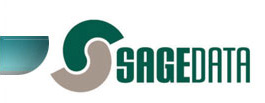Definition
An RFID tag (Radio Frequency IDentification Tag) can be uniquely identified by a receiver which decodes a radio signal that the tag transmits. Passive RFID tags are not directly powered, but absorb energy radiated by the reader. The energy is stored until there is sufficient to enable the tag to transmit a short burst of radio energy that is encoded with the unique ID of the tag. This is a form of Auto ID (Automatic Identification). There are currently three bands of signal most used by passive RFID Tags, which can be LF, HF or UHF (Ultra High Frequency). UHF tags are the highest frequency of the three types.
Advantages of Passive RFID tags vs Active RFID tags
Benefits of passive (compared to active)RFID tags include small size and lower cost.
A "typical" tag is about four inches long, and inch wide, and less than a millimeter thick. Most of the area of the tag is taken up by the antennae, and these come in an array of shapes. The "smarts" of the tag are carried on a small chip, usually at the centre of the tag, and the size of the chip is generally less than 2mm square. The antennae is usually printed on clear plastic material. The tag is often part of an adhesive label and can easily be attached to a container, or any other item that needs to be tracked. But this is just the "standard" tag. Passive UHF tags are now available in a bewildering array of configurations, from small button format, to plastic encapsulated tags which can be six inches long and more than a quarter of an inch thick.
Cost of the tag varies greatly with format and quantity. At the low end, a standard "naked" tag can be purchased in quantity for less than 25 cents. The larger, specialised, encapsulated tags can cost closer to ten dollars each.
Advantages of Passive UHF RFID tags vs Passive HF and LF RFID tags
Advantages include lower cost and greater range. HF RFID Tags require a complete circuit, which means that they must be printed on both sides of the support material, much like a two sided printed circuit board. This puts the manufacturing cost and price up. The range of an HF tag is typically from a few inches up to a foot or so. The range of a UHF tag can be several metres, depending on tag type and reader capability.
Range
A Passive UHF RFID tag can typically be read at a range of 5 metres. This compares well against LF and HF tags. For LF tags, range can be less than an inch. for HF tags, range can be to a twelve inches. For UHF tags, range can be up to twenty feet. But long range is not always a good thing. In systems where the tag is used as a locator, range can be deliberately reduced, and this is often done by reducing the "gain" of the reader.
Effect of surroundings and orientation.
Surroundings
We have been to many presentations where, especially in the early days, the presenter would hold up a can of Coke, and claim that in the future every can would be tracked with a passive UHF RFID Tag. A bold claim. One problem is that there are two materials that can adversely affect the range of a Passive UHF tag - and the two materials are metal and water. So a coke can not the best example. Technically it would be much easier to track every box of tissues in the world. Perform this test. Take a naked UHF tag. Check the range. Place it on a metal filing cabinet. Try to read it. In most cases, it can't be read, even at three inches. Now lift the tag off the metal surface by a few millimetres, and the tag can be read quite happily. There are specialised tags available today which can be fixed to a metal surface without degradation of the read range. In some cases range can even be enhanced.
Orientation
All Passive RFID tags harvest their energy from ambient radio signals, usually transmitted by the reading device. (It goes "transmit, stop, listen"). So the degree of linkage between the antennae on the reader and the antennae on the tag is critical. This can be enhanced by ensuring that they are aligned correctly. So readers use one of two types of antennae, with circular or linear polarisation. The trade off is between range and orientation. With circular polarisation, alignment is not critical, but range is reduced. A linear antennae in the reader will give greater range, but the receiver and tag antennae must be aligned. Twist the reader through ninety degrees, and the range drops dramatically.
Advantages of Passive RFID tags vs Active RFID tags
Advantages include cost, size, life, operating temperature range.
Cost
Depending on type, manufacturer and quantity, as a general guide assume that passive RFID tags are going to cost $1 to $3 for HF tags, and 50c to $6 for UHF tags. This compares to prices in the range $5 to $30 each for Active RFID tags. (Prices are changing rapidly, these are rough numbers as a general guide).
Size
Passive tags vary in size according to frequency.
UHF RFID tags are often the thinnest of all Tag types, due in part to their construction, which requires printing on only one side of the laminate. So UHF tags are typically three or four inches long, between 1/4 inch and one inch wide, and less than 1mm thick. (please excuse the mixed units). But recently introduced tags are now much smaller, in competition with HF tags, and are available in a range of formats including the size and shape of a small coin.
An LF RFID tag is perhaps the size and shape of a beer bottle cap, although tags in the form of a "plastic nail" are sometimes used where appropriate, especially for identifying trees.
An HF RFID tag is commonly packaged as a credit card, typically used for building access, but can also be incorporated into a key fob, as with the tags used to "pay at the pump".
Active RFID tags are generally larger than their passive counterparts. An active RFID tag can be in one of several formats. In credit card format, it is typically the thickness of four or five credit cards, say 1/8 inch or 3mm. More commonly it is in a format two or three inches long, perhaps 3/4 wide and 1/4 inch thick. Construction is usually sealed, and tags vary in how robust they might be.
Life
There is no practical limit to life of an passive RFID tag, in contrast to the life of an active tag, which is limited by the battery.
Temperature Range.
Passive UHF Tags work well at "normal" temperatures. Performance can be degraded at more than twenty degrees below zero, but performance returns as soon as the tag is warmed to temperatures in the normal operating range.
Applications
Because Passive UHF Tags are small in size and low in cost they are ideal for a number of tracking and material management applications. They can be used to identify and track physical assets, to track files and documents, to track chemicals, and to provide a "Geiger counter" style of function suitable for locating lost items.
Conclusion.
The technology of the Passive UHF RFID tag is improving rapidly. The low cost, good read range and small size make it the ideal candidate for many applications. Care must be taken when using these tags in proximity of metal and liquids.
SageData is based in Ottawa, Ontario, Canada.
For further information, please contact us...
Send email to "info@sagedata.com"
Contact us by phone...
within Ottawa, dial (613) 225-4404
outside Ottawa, dial (888) 838-1067
© SageData . Ottawa . Ontario . Canada





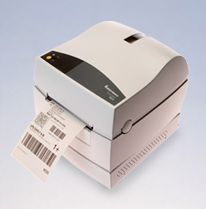
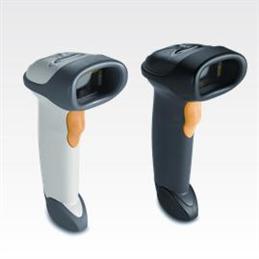
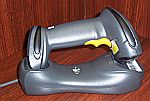
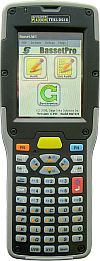

 Typical 2D Barcode
Typical 2D Barcode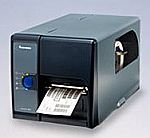 Barcode Printer Model PD41
Barcode Printer Model PD41
